The conventional approach to launching a community typically involves making it publicly available and investing heavily in marketing campaigns to attract potential members.
While this strategy can work, it often results in slow membership growth, high acquisition costs, and less engaged members.
A more effective alternative exists: creating a community referral program where access is gated and referrals are key.
This approach leverages exclusivity and social connections to drive membership growth more organically and cost-effectively.
When you restrict access and make member referrals the gateway, you transform your existing members into active advocates. Instead of simply joining your community, they become partners in building it.
This referral-based strategy creates a strong sense of belonging, as new members and referred members arrive through trusted friends rather than through impersonal advertising.
Many organizations have discovered that a well-designed referral program attracts more members and results in higher quality engagement.
Members joining through referrals are more likely to participate actively and refer friends themselves, creating a virtuous growth cycle.
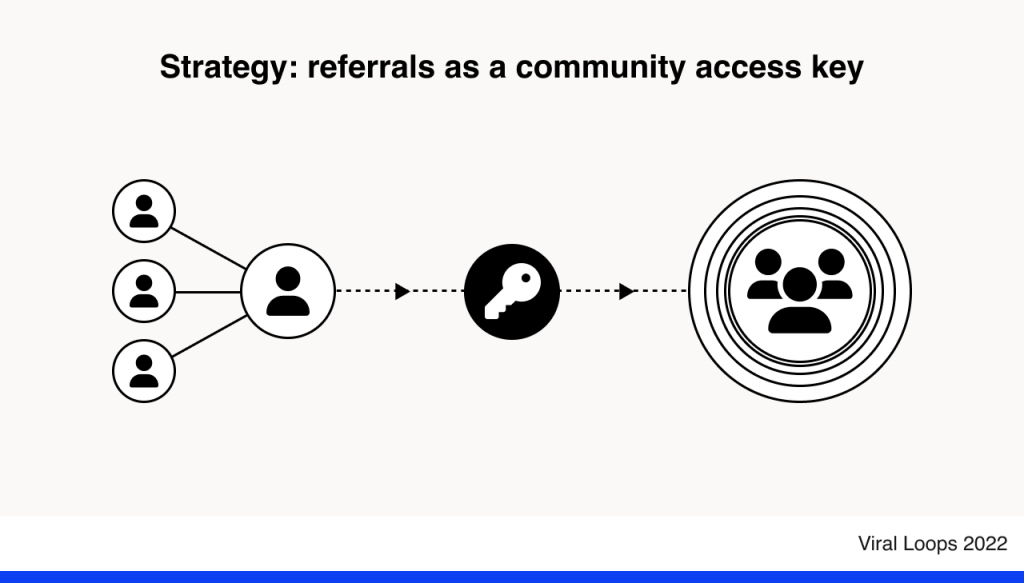
This guide will walk you through a comprehensive three-phase plan for launching a membership referral program.
We’ll explore why this approach works so effectively, provide detailed implementation steps for your referral process, and share best practices for creating meaningful rewards that motivate participation.
Whether you’re building an online community, a membership site, or a newsletter, these strategies will help you connect with future members and create a thriving base of current members without the excessive costs of traditional advertising materials.
Why Launch a Gated Community Referral Program?
A good referral program that gates access to your community creates several powerful advantages that traditional launch methods cannot match.
First, hidden content naturally fuels curiosity.
People who cannot immediately access your community become more intrigued about what they might be missing.
This psychological principle drives greater interest than freely available content ever could. Community organizations leveraging this approach consistently report higher perceived value among their audience.
Second, restricted access strengthens the feeling of belonging among existing members.
When someone gains entry to an exclusive space, they value that membership more highly and engage more deeply.
This enhanced commitment translates to more active participation and stronger connections between members.
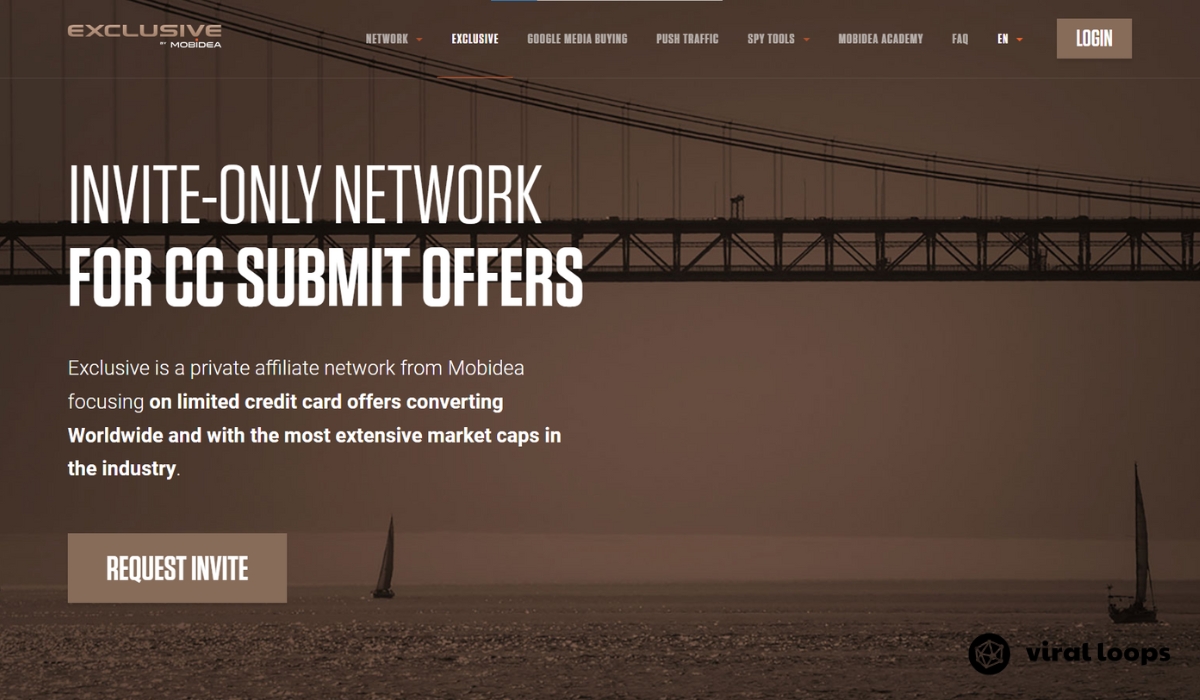
Third, referrals provide a remarkably cost-effective way to grow.
Rather than spending on advertising to reach new audiences, you harness the power of personal networks. Referral marketing has been proven to be more cost-effective than any other acquisition channels.
Your engaged members become your most effective marketing channel, bringing in qualified leads who already have a connection to someone in your community.
Referral marketing has been proven to be more cost-effective than any other acquisition channels. Share on XFinally, the process of referring transforms passive participants into invested advocates.
When members actively promote your community to their friends, they develop a personal stake in its success.
This word-of-mouth dynamic makes existing members more committed while simultaneously pre-qualifying new members who join through their social connections.
The Three-Phase Plan for a Successful Member Referral Program
Activating a member referral procedure requires a structured approach to maximize results. This strategy unfolds in three phases, each building upon the last to create momentum and sustainable growth.
Each phase requires specific resources and communication channels to reach and motivate your target audience effectively.
This process creates a powerful growth engine that attracts highly engaged new members while strengthening relationships with your existing community.
Phase 1: Create Exclusivity by Restricting Access
The foundation of a successful referral-based launch begins with creating genuine exclusivity.
This isn’t about artificial scarcity; it’s about building a controlled environment where the value of membership becomes apparent through its limited availability.
Start by closing every possible access point to your community. Make any Facebook groups private and hidden, implement verification gates on Discord servers, and require login credentials for custom community platforms.
Don’t forget to deactivate standard newsletter signup forms and password-protect relevant website content. Comprehensive access control is essential.
These technical barriers serve a critical purpose: they prevent potential members from “peeking inside” before following your referral system.
Brand new members who gain access through referrals value their membership more because they had to earn it, not just sign up.
For services with free tiers, consider creating a special “referral-only” level with additional benefits that aren’t available through standard registration. This creates a separate, more valuable space within your broader community.
The key principle here is consistency. If someone interested in your community can find a backdoor to full access, the perceived value of the referral system diminishes significantly.
Audit all your platforms to ensure complete access control before proceeding to the next phase.
Remember that this exclusivity serves as the foundation for all subsequent engagement. When rolled out properly, it creates the perfect environment for your referral program to thrive.
Phase 2: Building Buzz and Capturing Interest for Membership Growth
With access points secured, the next critical phase focuses on generating anticipation and capturing interest through strategic marketing.
The goal isn’t to get members yet—it’s to create a waitlist of eager participants who will fuel your referral engine.
Craft Compelling Marketing Materials
Develop content that reveals just enough about your community to provoke interest without giving everything away.
Your marketing content should highlight the specific problems your community solves and the shared interests that unite members.
Focus on communicating your unique value proposition (UVP), which differentiates your offering while emphasizing the community’s exclusive nature.
Effective email marketing campaigns should build a sense of anticipation rather than pushing for immediate conversion. Social media posts should generate questions and curiosity, not provide all the answers.
Create a Strategic Waitlist Landing Page
The centerpiece of this phase is a dedicated landing page designed to collect email addresses from interested prospects. This page serves dual purposes:
- Capturing contact information for your referral program launch
- Beginning to establish exclusivity and premium positioning
Your landing page should include a clear, compelling headline incorporating your core value proposition and concisely explaining community benefits.
Include strategic hints about exclusive content or opportunities without revealing too much detail. Keep the email submission form simple, avoiding requests for excessive information.
If possible, incorporate social proof elements from early testers to build credibility.
This waitlist becomes your initial audience for the referral program. The anticipation built during this phase makes these potential members more likely to participate actively when you launch the referral mechanism.
Importantly, avoid public announcements about your full launch plans. The mystery surrounding exactly how access will be granted helps maintain interest and positions your upcoming referral program for maximum impact.
Phase 3: Designing a Good Referral Program with Meaningful Rewards
The final phase involves activating your waitlist through a carefully structured referral system. This is where your community truly begins to take shape, as interested individuals transform into active participants and advocates.
Set the Optimal Referral Threshold
The number of successful referrals required for access is crucial to your program’s success. Setting this threshold too high creates friction; setting it too low diminishes the value of participation.
For most communities, requiring 2-3 successful referrals strikes the ideal balance between accessibility and exclusivity.
Consider your specific audience when determining this number. Professional networks may support higher thresholds (3-5 referrals), while consumer communities typically work better with lower thresholds (1-3 referrals).
Highly specialized or technical communities should stay on the lower end to accommodate smaller networks and more niche interests.
Create Personalized Referral Links
Each waitlist member should receive a unique referral tracking link to share with friends. These links serve several important functions. They allow accurate referral attribution while creating personal accountability for each participant.
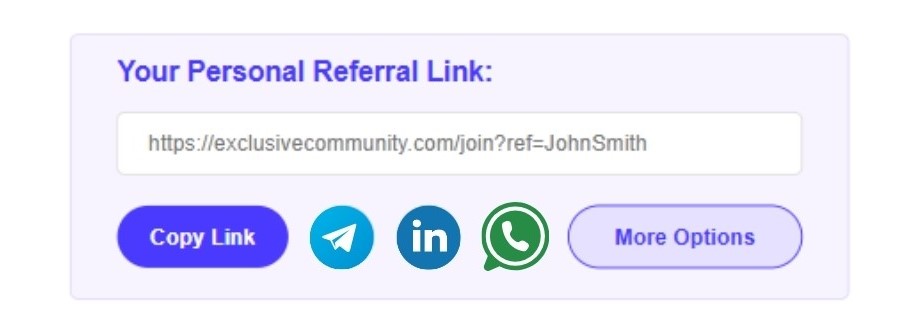
Additionally, they enable valuable data collection for program optimization and facilitate automatic reward distribution when referrals are successful.
Your referral system should make these links easy to share across multiple communication channels, including email, messaging apps, and social platforms.
Craft Compelling Referral Emails
The email introducing your referral program to waitlist members is perhaps the most critical communication in your entire launch sequence.
This message should clearly explain the exclusive nature of your community while emphasizing that recipients are among the first to receive referral opportunities.
Include simple instructions for using their unique link and set clear expectations about when and how access will be granted. Create a sense of urgency without resorting to artificial deadlines that could undermine trust.
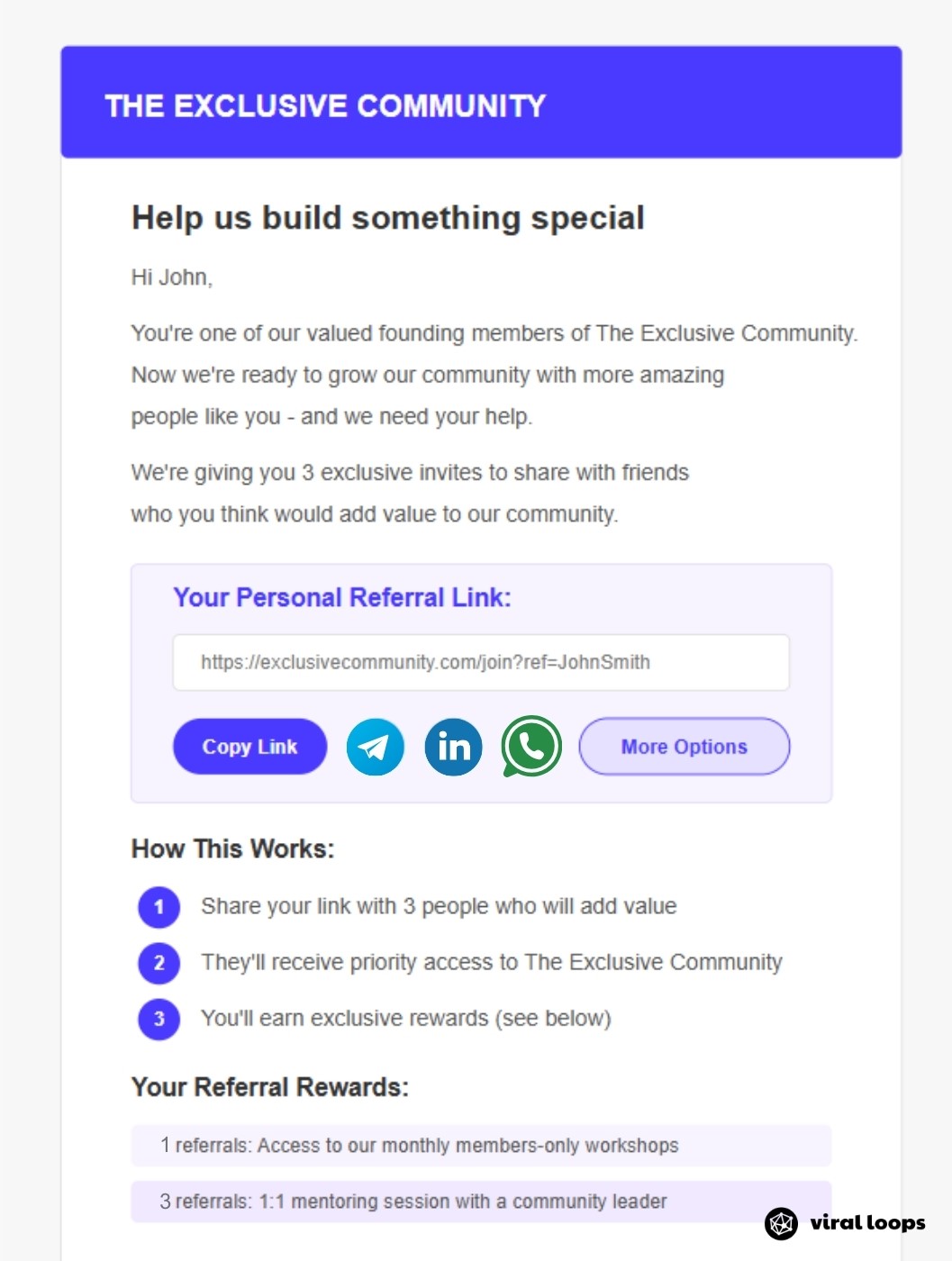
Implement a Two-Stage Launch Approach
For maximum impact, release your referral program in two distinct stages:
Stage A: Waitlist Activation
Begin by sending personalized emails only to waitlist members without making any public announcements about the program.
Grant immediate access to those who achieve the referral milestone and collect feedback from these early members to refine the community experience before wider release.
Stage B: Public Announcement
Once your initial members are settled, open the waitlist to the general public and announce that community access is available through referrals.
Maintain the same referral requirements established in Stage A for consistency. Leverage testimonials from your early members as powerful social proof to encourage new sign-ups.
This phased approach creates multiple waves of growth while maintaining the exclusivity that makes your community valuable.
Streamline Your Referral Program with the Right Tools
Implementing all these elements manually would be time-consuming and error-prone.
Referral marketing software like Viral Loops can handle the technical aspects of your program—from generating unique referral links to tracking successful conversions and automating access grants.
With features designed specifically for community referrals, such platforms help you manage the entire process in one place, eliminating spreadsheet tracking and reducing administrative overhead.
The automation ensures participants receive immediate feedback when their referrals sign up, maintaining momentum throughout your launch.
Start with a free trial to test how it works with your specific community needs before scaling your program.
Other Benefits of a Membership Referral Approach
Beyond the core advantages of growth and engagement, a membership referral strategy delivers several additional benefits that strengthen your community’s foundation.
Enhanced Member Quality
Referred members typically show higher engagement levels than those acquired through traditional marketing.
Studies consistently demonstrate that members who join through a personal connection participate more actively in discussions and remain members longer.
They tend to contribute more valuable content to the community and are significantly more likely to become advocates, perpetuating the growth cycle.
This quality difference stems from the built-in accountability that comes with personal referrals. When someone joins through a friend’s recommendation, they feel a natural obligation to participate.
Reduced Customer Acquisition Costs
The financial advantages of referral-based growth extend beyond the initial launch phase.
The referral procedure works long after establishing your community, providing lower ongoing marketing expenses and more predictable growth metrics.
You’ll typically see higher lifetime value from referred members and better overall return on your community investment.
Many organizations report 40-60% lower acquisition costs through referral programs than paid advertising channels.
Valuable Data Collection
The referral system generates rich data about relationship networks and influence patterns within your community.
This information helps identify your most effective advocates and reveals natural sub-communities forming around key members.
You’ll gain insights into which content and discussions generate the most sharing and discover potential candidates for ambassador or leadership programs based on their referral performance.
These insights enable more targeted community development efforts and help identify your most loyal members for future initiatives.
Real-World Success Stories: Community Referral Programs in Action
Understanding the theory behind referral programs is valuable, but seeing real-world implementations can provide even clearer insights. Let’s explore how several communities have successfully leveraged the gated referral approach to build thriving memberships.
The Room Where It Happens: Exclusivity with Purpose
“The Room Where It Happens” exemplifies the power of combining exclusivity with a clear mission. This community platform focused on democratizing access to new ideas, businesses, and investments—but with an intentional twist.
Rather than opening their doors to anyone willing to pay, they implemented a strategic referral requirement: each member needed to invite three friends to gain access.
Their messaging emphasized that true democratization requires diversity, and the referral mechanism ensured this diversity by bringing in people from different networks.
What made their approach particularly effective was the careful balance between exclusivity and purpose.
Their email messaging clearly communicated the value proposition: “an interactive experience rich with information and people that can change your perspective and decision-making.”
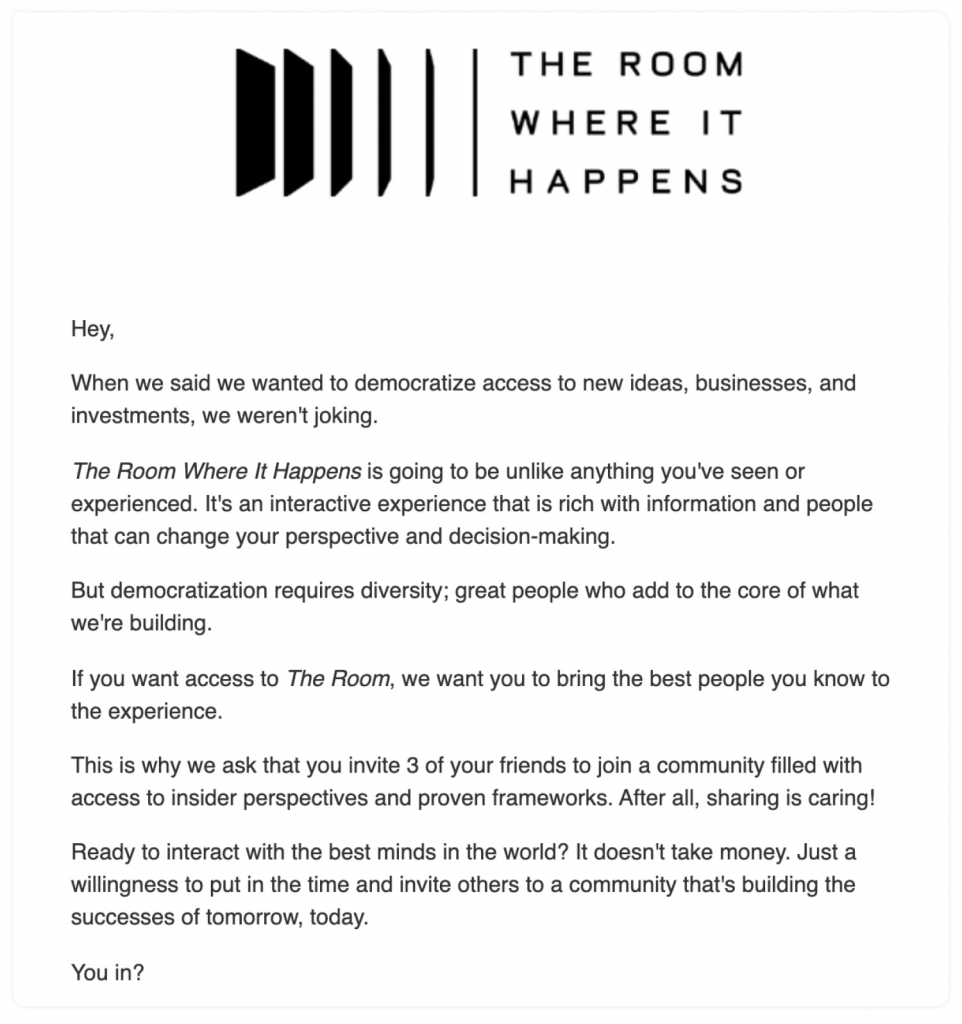
This clarity gave potential members compelling reasons to complete the referral process.
The results were impressive. By requiring referrals, they built a community filled with engaged members who felt personally invested in the platform’s success.
The referral threshold was high enough to create perceived value but accessible enough to drive consistent growth.
Key takeaway: When implementing a referral program, clearly articulate why the exclusive nature serves a larger purpose. This transforms the referral requirement from a barrier into a meaningful contribution to the community’s value.
Clubhouse: Scarcity Drives Desire
When Clubhouse launched its audio-based social platform, they could have followed the standard approach of immediate public access. Instead, they implemented one of the most talked-about invite-only systems in recent tech history.
The app initially limited access to a small number of industry influencers, each given just a few invites to share. As existing users participated in the member referral program, they would gradually receive more invites to distribute.
This created a cascading effect where the perceived value of an invite increased dramatically.
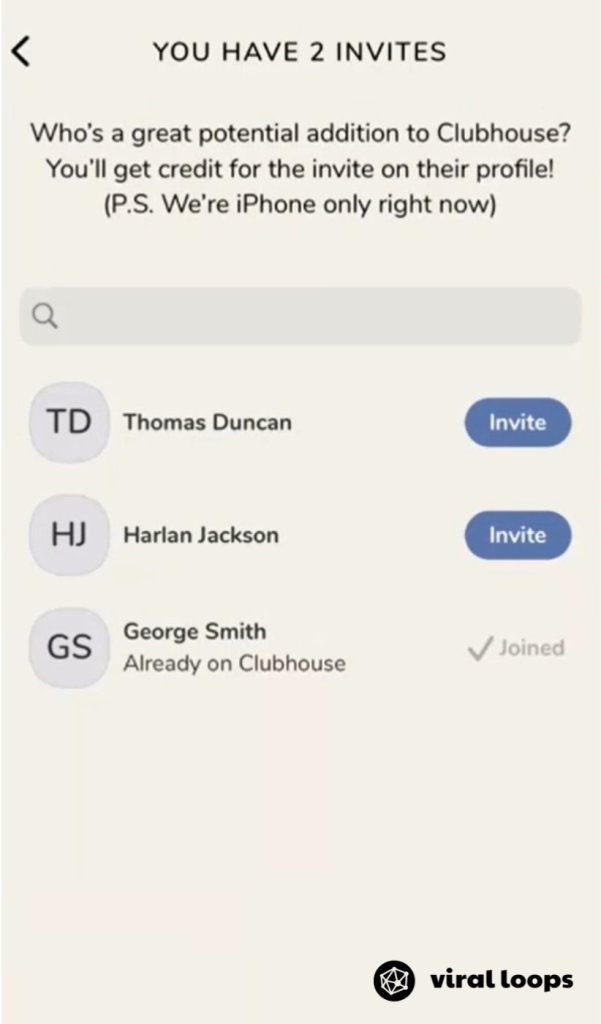
What’s notable is how this approach generated unprecedented demand. By early 2021, Clubhouse invites were selling on eBay for up to $400, despite the app being free to use.
The exclusivity created such strong desire that people were willing to pay simply for access.
The strategy generated massive organic media coverage, with articles explaining “how to get a Clubhouse invite” becoming common across tech publications.
This free publicity drove awareness far more effectively than traditional marketing could have.
Key takeaway: Strategic scarcity can transform your community launch from a marketing expense into a self-perpetuating news story, dramatically reducing acquisition costs while increasing perceived value.
OnePlus: Creating Product Demand Through Invitation
The smartphone company OnePlus took a radical approach when launching their first device in 2014. Rather than competing directly with established brands through traditional retail channels, they created an invite-only purchasing system.
Initial invites were extremely limited, distributed primarily to forum members and through creative contests. Once customers purchased a phone using an invite, they would eventually receive invites they could share with others.
This system accomplished several critical goals simultaneously:
- it helped the new company manage inventory and cash flow more effectively,
- created a sense of exclusivity around what might otherwise have been seen as just another Android phone, and
- fostered a strong community feeling among early adopters.
The strategy generated extensive media coverage and social sharing, as people actively sought invites through social media.
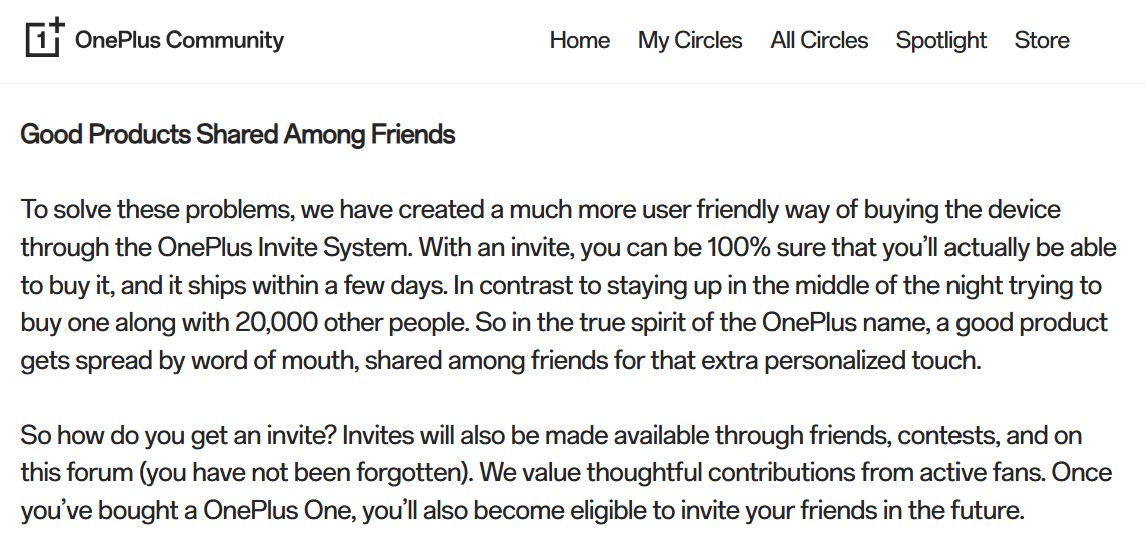
Customers who received invites felt special and valued, which translated into passionate advocacy for the brand.
The invite system was so successful that OnePlus continued using it for subsequent product launches before eventually transitioning to traditional sales methods as they grew.
Best Practices for Your Community Referral Program
To maximize the effectiveness of your referral strategy, incorporate these proven best practices throughout implementation:
Begin with Your Most Engaged Members
Instead of treating all waitlist participants equally, identify and activate your most engaged members first. These enthusiastic early adopters typically generate significantly more referrals than average participants.
Look for engagement signals such as quick responses to your emails and meaningful social media interactions with your content.
Pay attention to those who ask thoughtful questions about your community or have previously participated in related communities or initiatives.
Maintain Simple Communication Channels
Resist the temptation to add complexity to your referral messaging. Clear, concise instructions consistently outperform elaborate explanations.
Each communication should focus on a single action step with minimal distractions.
Balance Exclusivity with Growth Goals
Monitor your acceptance rate carefully as your program progresses. If too few people are completing the referral requirements, consider adjusting the threshold or providing additional support resources.
Track Essential Data Points
Establish measurement systems for critical metrics that reflect program health. Track referral link click-through rates and conversion rates from clicks to actual sign-ups.
Monitor the average number of referrals per participant and the typical time needed to complete referral requirements.
Perhaps most importantly, measure the community participation rates of referred members compared to those who join through other channels.
Regular analysis of these data points allows for continuous optimization of your program, helping you maintain momentum throughout your community growth journey.
Final Thoughts
A well-executed community referral program transforms how you attract and engage members, creating a self-sustaining growth engine built on authentic connections.
The strategic use of exclusivity and referrals taps into fundamental human psychology while reducing acquisition costs.
Introducing the three-phase approach outlined in this guide will help you grow more efficiently and establish a foundation of highly engaged members who feel genuine ownership in your community’s success.
The quality of members who join through referrals typically surpasses those acquired through traditional marketing, creating a stronger, more resilient community from day one.
We’ve designed Viral Loops with all the tools you need to launch these strategies without technical complexity.
Our Campaign Wizard guides you through setup, our customizable templates fit your specific community needs, and our real-time analytics help you optimize performance from launch day forward.
Start building your referral-driven community today with a free trial and experience the power of member-driven growth firsthand.
